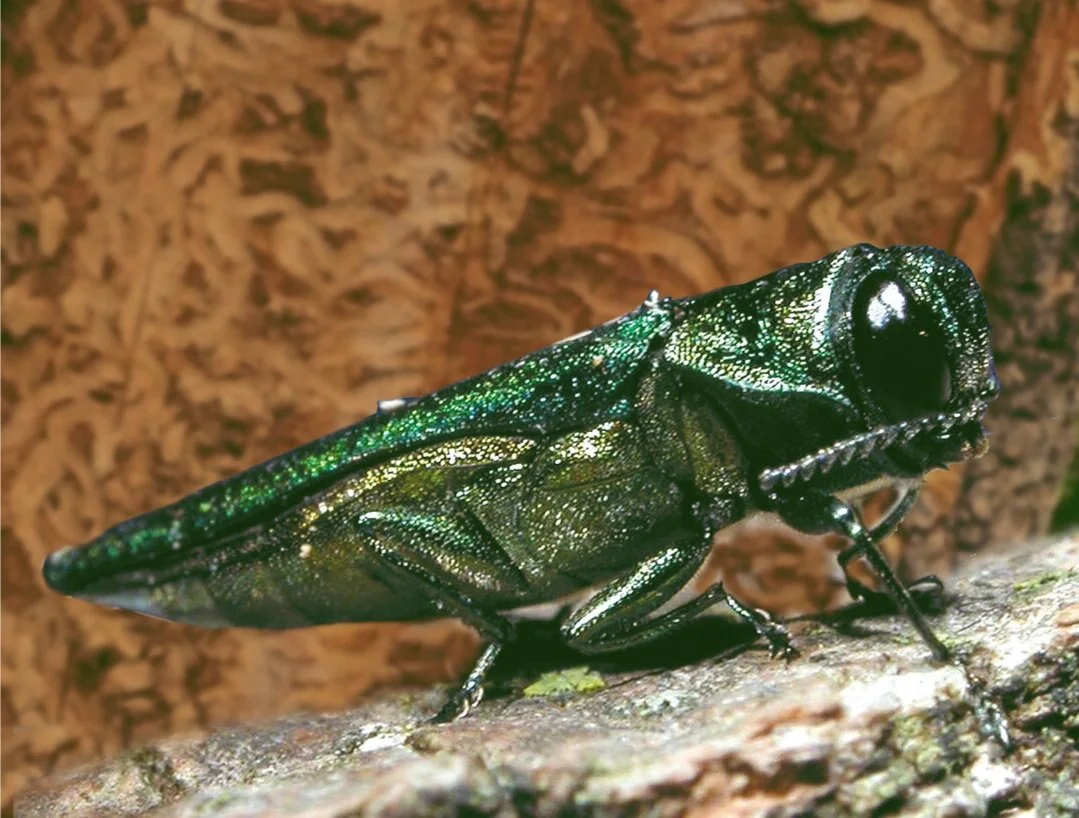
Newport’s trees are under threat from damage, disease, age and pests.
Help us keep Newport’s trees safe and healthy by learning about the variety of threats our trees face:
Emerald Ash Borer
Since its first U.S. sighting in 2002, the invasive Emerald Ash Borer (EAB) has had a devastating effect on the ash tree population across the eastern United States, killing tens of millions of trees. While these destructive beetles have not yet been detected on Aquidneck Island, sightings have been reported elsewhere in Rhode Island.
The Newport Tree Conservancy and the City of Newport have, since 2014, been preparing for the arrival of EAB through state and local monitoring efforts. In July 2018 EAB was found in Rhode Island. NTC has secured grant funds to inventory and treat Newport's public ash trees and we are ensuring treatment cycles for a selection of Newport’s ash trees in hopes of keeping the invaders at bay.
Beech Leaf Disease
American and European beech trees here in Newport are showing signs of Beech Leaf Disease (BLD). Infection can be detected by looking for the distinctive dark bands within leaves when held up to light. This novel disease appears to be spread via folial nematodes and has the potential to kill infected trees. Beech leaf disease causes premature leaf drop and thin canopies, and also makes the trees more susceptible to other pests.
Gypsy Moth
The gypsy moth is an invasive non-native insect with larvae that feed voraciously on the foliage of many North American plants. Gypsy moth caterpillars feed on over 300 species of trees and shrubs. The caterpillars feed for about six to eight weeks and then pupate in a protected area.
During a heavy infestation, Gypsy moth caterpillars may devour much, if not all, foliage from trees. This defoliation is an additional stress (along with drought, soil compaction, etc.) that can affect tree physiology and may ultimately result in death.



